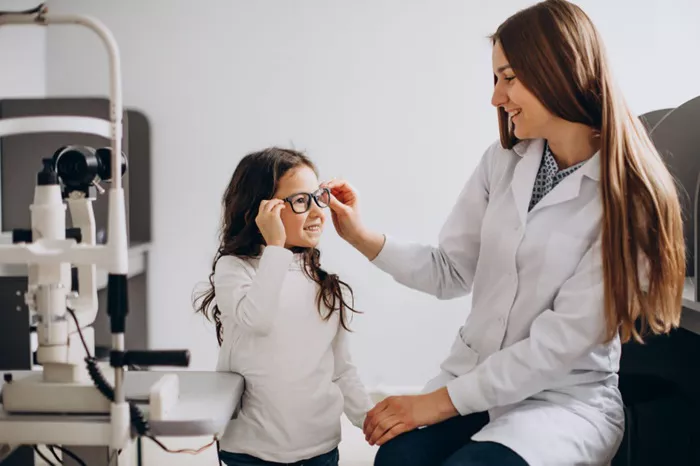A recent study highlights myopia, or nearsightedness, as an escalating global health issue projected to impact millions more children by 2050. Researchers have identified a significant correlation between increased screen time and the deterioration of children’s eyesight during COVID-19 lockdowns, as children spent more time indoors and less engaged in outdoor activities.
Alarming Statistics
Currently, one-third of children worldwide are affected by myopia, a condition predominantly driven by genetic factors. Dr. Mohammed Atamna, an ophthalmology specialist at Maccabi Healthcare Services, explains that children born to myopic parents have a higher likelihood of developing the condition. Environmental factors also play a crucial role; excessive reading and close screen usage at a young age can lead to early onset myopia. Notably, in ultra-Orthodox communities, many children exhibit nearsightedness due to prolonged reading from a young age.
Dr. Atamna notes that the rising number of children using glasses can be attributed to increased awareness and regular vision screenings, contrasting the practices of 30 years ago when many only sought corrective lenses in university.
Impact of the Pandemic
The study, which analyzed data from over five million children across 50 countries, reveals that the prevalence of myopia has tripled from 1990 to 2023, now affecting 36% of children. The rise has been particularly pronounced following the COVID-19 pandemic. Researchers emphasize a potential link between pandemic lockdowns and the accelerated decline in vision among young people.
Dr. Atamna supports this finding, stating, “The connection between COVID-19 and myopia is not surprising. Prolonged indoor time contributes significantly to vision issues. With children gravitating towards screens and receiving less natural light, their visual development suffers.”
Geographic Disparities in Myopia Rates
Asia records the highest myopia rates globally, with 85% of children in Japan and 73% in South Korea affected, while over 40% of children in China and Russia also suffer from the condition. In stark contrast, only about 1% of children in Paraguay and Uganda experience vision issues. In the UK, Ireland, and the U.S., the prevalence stands at around 15%.
Myopia typically begins in primary school and worsens until the eye ceases growth around age 20. Factors such as early formal education in East Asia contribute to this trend, as children in regions like Singapore and Hong Kong begin school as early as age two, increasing their exposure to screens and books.
Gender Differences and Outdoor Activities
Dr. Atamna points out that in Israel, cultural diversity complicates the data analysis compared to more homogenous regions like China or Japan. However, the impact of screen time on children’s vision remains evident. The study also reveals that girls are more susceptible to myopia than boys, potentially due to spending less time outdoors during adolescence. Dr. Atamna stresses the importance of outdoor play for healthy vision development, noting that greater exposure to natural light and a wider range of vision helps mitigate myopia risk.
Recommendations for Eye Health
Dr. Atamna urges careful monitoring of screen time for children, warning that excessive use can lead to myopia, dry eyes, and eye strain. He emphasizes the importance of outdoor activities and outlines several key recommendations to protect children’s vision:
Time Outdoors: Children should spend at least two hours outside daily, particularly between ages seven and nine. Natural sunlight and physical activity support healthy vision development.
Regular Eye Exams: Routine eye examinations are vital during critical growth years, with recommendations for assessments at birth, age one, three, and six.
Limit Screen Time: While screens can be a part of daily life, Dr. Atamna advises against unrestricted use. “It’s crucial to control screen time, allowing for healthy limits rather than outright bans.”
Proper Nutrition: A balanced diet rich in vitamins A, B6, B12, and iron is essential for eye health, particularly in early childhood.
Recognizing Signs of Vision Problems: Parents should be vigilant for signs such as holding objects too close, difficulty following instructions, and developmental delays, which may indicate vision issues.
Conclusion
Dr. Atamna emphasizes the importance of maintaining a balance between screen time and outdoor activities. “Reading in bright, natural light and ensuring ample outdoor play can significantly impact eye health.” With heightened awareness and expert recommendations, there is hope for improved vision health in future generations and a potential reduction in myopia prevalence among children.
Related topic:
Top 10 Natural Remedies For Aging Eyes
How Do You Get Rid Of Eyelid Sores?

